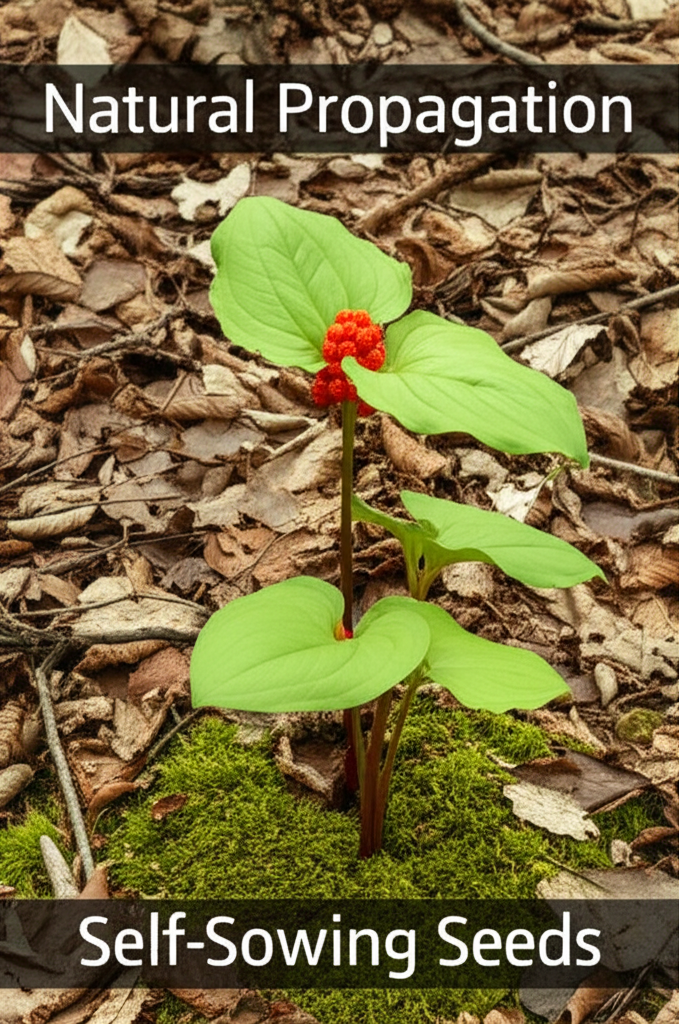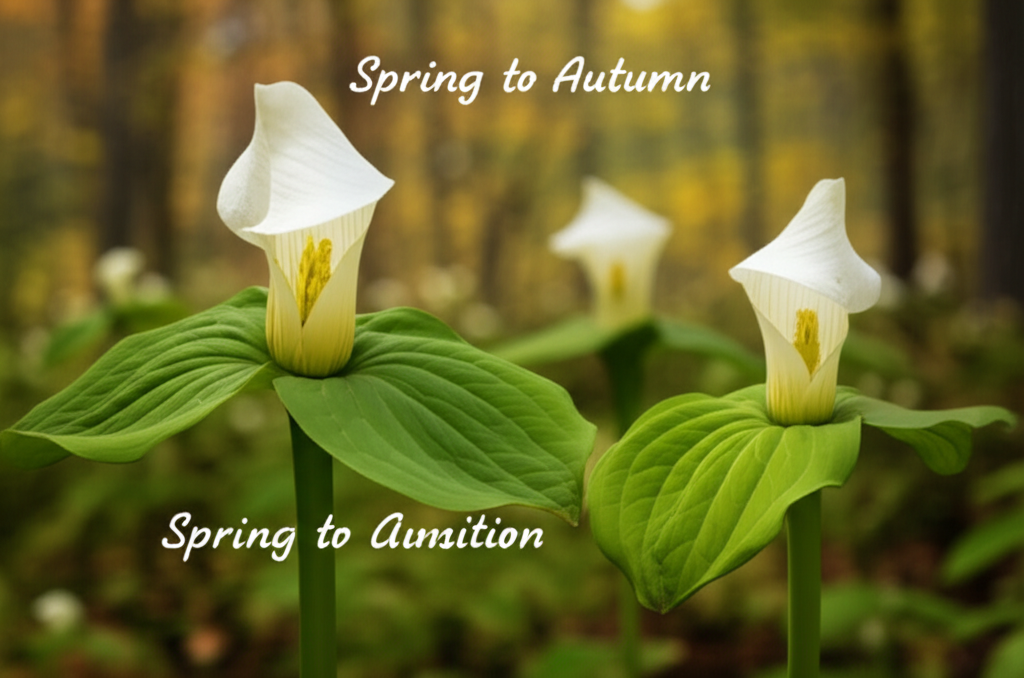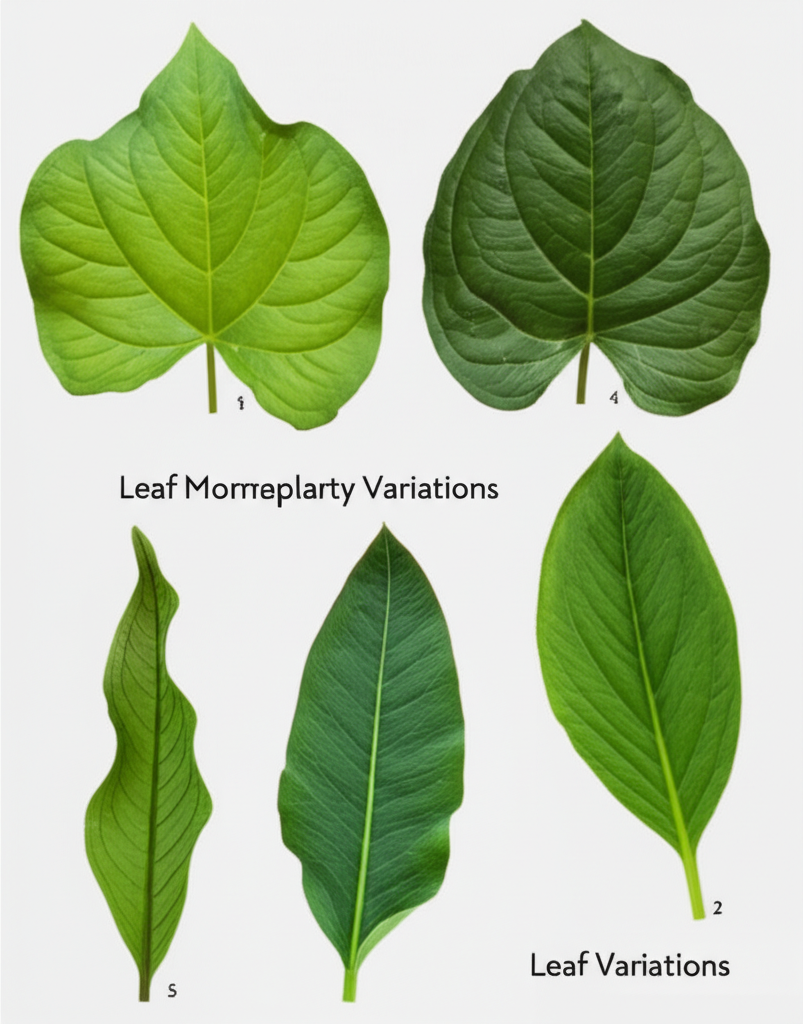Unearthing the Secrets of Arisaema triphyllum: Natural Propagation of Jack-in-the-Pulpit
Jack-in-the-Pulpit, scientifically known as Arisaema triphyllum, is a captivating native wildflower that graces the shaded woodlands of eastern North America. Its unique hooded spathe, resembling a preacher in a pulpit, and the vibrant red berries that follow its bloom make it a sought-after addition for any shade garden enthusiast. While many may think of purchasing established plants, understanding the natural propagation methods of this woodland gem can unlock a deeper connection with its life cycle and allow for the expansion of your own Jack-in-the-Pulpit population. This comprehensive guide will delve into the intricate yet rewarding ways Arisaema triphyllum reproduces naturally, offering you the knowledge to cultivate these fascinating plants from their very beginnings.
The Lifecycle of Jack-in-the-Pulpit: A Foundation for Propagation
Before we explore propagation techniques, it’s essential to grasp the annual life cycle of Jack-in-the-Pulpit. This understanding is crucial for timing your propagation efforts and appreciating the plant’s natural reproductive strategies.
The plant begins its year as a dormant corm, typically buried a few inches below the soil surface. In early spring, as the soil warms and moisture becomes available, the corm sends up a single, leafless flower stalk. This stalk bears the distinctive spathe and spadix, the plant’s reproductive organs. Following successful pollination, which is often carried out by flies and gnats attracted to the spadix, the flower stalk elongates and develops a cluster of bright red berries. These berries contain the seeds.
During the summer months, the leaves, which emerge after the flowering stalk, photosynthesize and nourish the corm for the following year. As autumn approaches, the leaves yellow and die back, signaling the plant’s preparation for dormancy. The corm then enters a dormant state throughout winter, awaiting the return of spring.
It is important to note that Jack-in-the-Pulpit exhibits a fascinating phenomenon called protandry, where the flowers mature first as male, producing pollen, and then later develop into female flowers, receptive to pollination. This ensures cross-pollination and genetic diversity.
Natural Propagation Method 1: Seed Propagation – Patience Rewarded
The most fundamental method of natural propagation for Jack-in-the-Pulpit is through its seeds. These seeds are contained within the attractive red berries that ripen in late summer and early autumn. While seemingly straightforward, seed propagation requires patience and an understanding of the specific conditions that mimic the plant’s natural germination environment.
Harvesting and Preparing Seeds
The ideal time to harvest seeds is when the berries have reached their full vibrant red color and are slightly softened. Gently remove the berries from the fruiting stalk. It is crucial to avoid harvesting seeds from plants that appear unhealthy or are not thriving, as this can perpetuate weakness.
Once harvested, the berries need to be processed to separate the seeds from the fleshy pulp. This can be done by gently mashing the berries in a bowl of water. The pulp will generally float, while the heavier seeds will sink to the bottom. Carefully strain the mixture through a fine-mesh sieve, rinsing until all pulp is removed.
Stratification: Mimicking Winter’s Embrace
Jack-in-the-Pulpit seeds require a period of cold, moist stratification to break their dormancy and prepare them for germination. This process mimics the winter conditions the seeds would naturally experience in the soil. There are two primary methods for stratifying Arisaema triphyllum seeds:
- Natural Stratification (Sowing Outdoors): This is the most straightforward and often the most successful method, as it perfectly replicates nature’s approach. Sow the cleaned seeds directly into a prepared seedbed in your garden in late autumn or very early winter. Choose a location that receives dappled shade and has well-draining, humus-rich soil, similar to a woodland environment. Ensure the soil remains consistently moist but not waterlogged. The seeds will then undergo natural stratification as the winter progresses and should germinate in the spring.
- Artificial Stratification (Cold, Moist Storage): If you prefer to start seeds indoors or live in a region with exceptionally mild winters where natural stratification might be unreliable, you can artificially stratify the seeds.
1. Mix the cleaned seeds with a medium like moist peat moss, vermiculite, or perlite. The medium should be damp but not dripping wet.
2. Place the seed-and-medium mixture into a resealable plastic bag or a small container.
3. Label the bag or container with the plant name and the date.
4. Store the bag in the refrigerator (not the freezer) for a minimum of 90 days. Check the moisture level periodically and add a little more if it appears dry.
5. After the stratification period, sow the seeds in pots or a seedbed as described below.
Sowing and Germination
Whether you’ve used natural or artificial stratification, the sowing process is similar.
- Fill shallow trays or pots with a well-draining seed-starting mix, or prepare a dedicated seedbed in a shaded area of your garden.
- Sow the stratified seeds about 1/2 inch deep.
- Gently water the sown seeds, ensuring the soil is moist.
- Cover the trays or beds with a layer of mulch (e.g., shredded leaves or pine needles) to help retain moisture and regulate soil temperature.
- Germination can be slow and erratic, often taking anywhere from a few months to over a year. Don’t be discouraged by initial lack of activity. You may see germination in the first spring after sowing, or it might be delayed until the second spring.
Caring for Seedlings
Jack-in-the-Pulpit seedlings are delicate and require consistent moisture and protection from harsh sunlight and drying winds.
- Once seedlings emerge, ensure they are kept consistently moist.
- If growing in containers, provide dappled shade. If in a garden bed, ensure they are in a naturally shaded location.
- It will take several years for these seedlings to mature into flowering plants. They typically spend their first year or two as a single, unfurling leaf (a “brain leaf” or juvenile leaf) before developing the characteristic three-part leaf structure and eventually producing a flower. Patience is key when growing from seed.
Natural Propagation Method 2: Corm Division – A Faster Route
While seed propagation is the ultimate natural method, mature Jack-in-the-Pulpit plants also reproduce vegetatively by forming offsets or “cormlets” around the main corm. Dividing these cormlets is a quicker way to obtain new plants compared to starting from seed.
Identifying Cormlets
Over time, a healthy Jack-in-the-Pulpit plant will develop smaller corms, or cormlets, attached to the sides of the main, mature corm. These cormlets are essentially miniature versions of the parent corm and contain the genetic material for a new plant.
When to Divide
The ideal time to divide corms is during the dormant season, which is typically in late autumn or very early spring, just before new growth emerges. Dividing during dormancy minimizes stress on the plant and allows the separated corms to establish themselves before the demands of active growth.
The Division Process
- Locate the Parent Plant: Gently excavate the soil around a mature Jack-in-the-Pulpit plant. Be careful not to damage the root system or the corms.
- Expose the Corms: Carefully brush away the soil to reveal the main corm and any attached cormlets.
- Separate the Cormlets: Using a clean, sharp knife or trowel, carefully cut or twist the cormlets away from the main corm. Ensure that each cormlet has at least one small bud or “eye” from which new growth will emerge.
- Preparation for Replanting:
If the cormlets are small and thin, you can dust the cut surfaces with a fungicide to prevent rot, although this is not always necessary if the cuts are clean and the conditions are dry.
Allow the separated cormlets to air dry for a day or two in a cool, dry place. This helps to callus over any cuts and reduces the risk of rot.
Replanting Divided Corms
Once prepared, the divided cormlets can be replanted:
- Site Selection: Choose a location with similar conditions to where the parent plant thrives: rich, moist, well-draining soil and dappled shade.
- Planting Depth: Plant the cormlets about 2-3 inches deep, with the bud end facing upwards.
- Spacing: Space the cormlets about 6-12 inches apart, depending on the expected mature size of the plant and your gardening design.
- Watering: Water thoroughly after planting to settle the soil.
Caring for Divided Corms
- Keep the soil consistently moist, especially during the first growing season.
- Mulch around the newly planted corms to retain moisture and suppress weeds.
- It will take a year or two for divided cormlets to mature enough to flower, but they will generally establish faster than seedlings.
Key Facts and Comparisons for Jack-in-the-Pulpit Propagation
Understanding the nuances of each propagation method is crucial for making informed decisions in your garden. Here’s a comparative overview:
| Feature | Seed Propagation | Corm Division |
|---|---|---|
| Primary Natural Method | Sexual Reproduction via seeds | Asexual Reproduction via cormlets |
| Maturity to Flowering | Slow (3-7+ years) | Faster (1-3 years) |
| Genetic Diversity | High (combines traits of both parents) | Low (clone of parent plant) |
| Effort Required | High (due to long germination and growth period) | Moderate (involves excavation and separation) |
| Reliability | Can be variable, requires patience | Generally reliable for obtaining new plants |
| Ideal Timing | Late autumn/early winter for sowing | Late autumn or early spring (dormant season) |
| Starting Material | Seeds from ripe berries | Offsets (cormlets) from mature corms |
Troubleshooting and Best Practices for Success
Even with the best intentions, propagation can sometimes present challenges. Here are some common issues and best practices to ensure success:
Common Propagation Challenges and Solutions
- Low Seed Germination: This is often due to insufficient or improper stratification. Ensure seeds have had adequate cold, moist treatment. Also, remember that some seeds may simply not be viable.
- Rotting Corms/Seedlings: Overwatering is the most common culprit. Ensure excellent drainage in your soil mix and avoid waterlogged conditions.
- Slow Growth: Jack-in-the-Pulpit is a slow-growing plant by nature. Patience is essential. Ensure adequate light, moisture, and nutrients (provided by a rich soil).
- Pest and Disease Issues: While generally robust, seedlings can be susceptible to damping-off disease. Ensure good air circulation and avoid overwatering. Adult plants are less prone to significant pest issues in their natural shaded habitat.
Tips for Enhancing Success
- Source Healthy Parent Plants: If obtaining seeds or cormlets, ensure they come from healthy, vigorous parent plants.
- Mimic Natural Conditions: The key to success with woodland natives is to replicate their natural habitat as closely as possible in your garden. This includes the type of soil, moisture levels, and light exposure.
- Start Small: Begin with a few seeds or cormlets to get a feel for the process before attempting to propagate large numbers.
- Document Your Efforts: Keep records of when you sowed seeds, when you divided corms, and the conditions under which they were kept. This information will be invaluable for refining your techniques.
Pros and Cons of Each Propagation Method
To further aid your decision-making, consider the advantages and disadvantages of each natural propagation method.
| Method | Pros | Cons |
|---|---|---|
| Seed Propagation |
|
|
| Corm Division |
|
|
The Rewards of Natural Propagation
Propagating Jack-in-the-Pulpit naturally is not just about increasing your plant collection; it’s about engaging with the intricate beauty of a native wildflower and contributing to its preservation. By understanding and implementing these methods, you gain a deeper appreciation for the resilience and reproductive strategies of Arisaema triphyllum. The journey from a tiny seed or a small cormlet to a blooming woodland marvel is a testament to the power of nature and a truly rewarding experience for any gardener. Embrace the challenge, enjoy the process, and soon your shaded corners will be alive with the unique charm of these captivating “preachers.”



